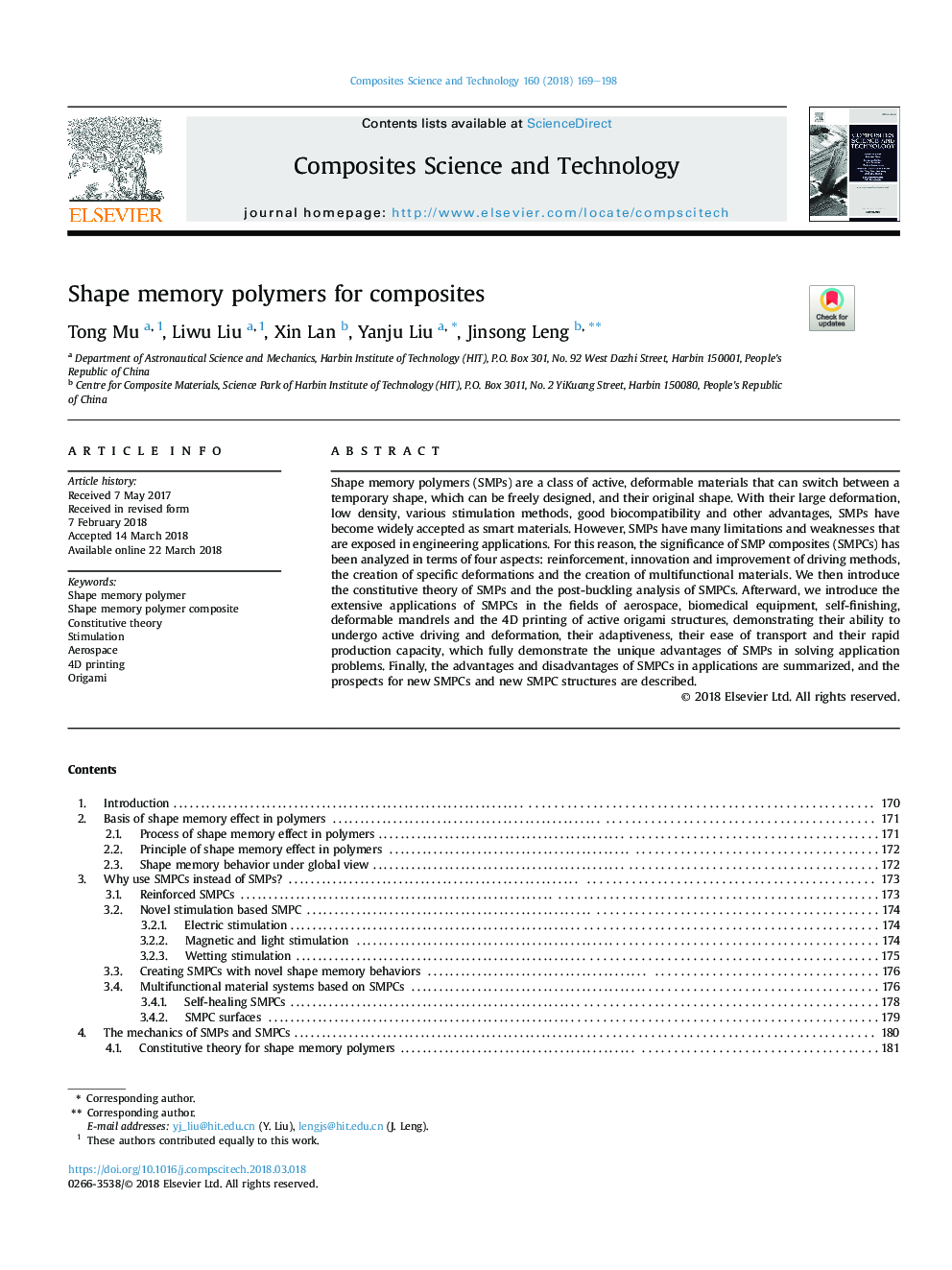| Article ID | Journal | Published Year | Pages | File Type |
|---|---|---|---|---|
| 7214496 | Composites Science and Technology | 2018 | 30 Pages |
Abstract
Shape memory polymers (SMPs) are a class of active, deformable materials that can switch between a temporary shape, which can be freely designed, and their original shape. With their large deformation, low density, various stimulation methods, good biocompatibility and other advantages, SMPs have become widely accepted as smart materials. However, SMPs have many limitations and weaknesses that are exposed in engineering applications. For this reason, the significance of SMP composites (SMPCs) has been analyzed in terms of four aspects: reinforcement, innovation and improvement of driving methods, the creation of specific deformations and the creation of multifunctional materials. We then introduce the constitutive theory of SMPs and the post-buckling analysis of SMPCs. Afterward, we introduce the extensive applications of SMPCs in the fields of aerospace, biomedical equipment, self-finishing, deformable mandrels and the 4D printing of active origami structures, demonstrating their ability to undergo active driving and deformation, their adaptiveness, their ease of transport and their rapid production capacity, which fully demonstrate the unique advantages of SMPs in solving application problems. Finally, the advantages and disadvantages of SMPCs in applications are summarized, and the prospects for new SMPCs and new SMPC structures are described.
Keywords
Related Topics
Physical Sciences and Engineering
Engineering
Engineering (General)
Authors
Tong Mu, Liwu Liu, Xin Lan, Yanju Liu, Jinsong Leng,
